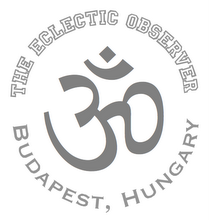By Sven Pomykalo and
Ugo Eriobuna
Ugo Eriobuna
Bradley Edwards & Associates Ltd. is a real estate advisory firm based in Budapest, assisting and advising both private and professional investors making overseas real estate investments in Hungary. Their services include: property sales, property mortgages, property furnishing, property management, and property rental.
Robert Beck is the managing partner of the company. While Beck is a veteran of listing and selling property in the area for the past three years, his company is not a member of the Multiple Listing Service in Hungary, nor does he hold any position in Hungary either as a member or a trustee on any Real Estate boards in Hungary. He does however have over 2.000 apartments to sell and 500 to rent. Among all the agents selling properties in Budapest, his firm ranks 15th in terms of properties sold.
“The rental market is very strong in Budapest,” said Beck. “But in order to succeed in Real Estate business it takes basically luck, consistency, quality service, and also, good clients.”
In Property Sales, the firm offers a wide selection of properties available in the prime districts of Budapest for both commercial and residential real estate investments.
In regard to Property Mortgages, Bradley Edwards claims that mortgages for individuals in Hungary are as readily available as in Western Europe, subject to the usual status requirements. They add, however that it can be very time consuming and difficult for a foreign citizen to apply for a mortgage due to geographical distance and communication difficulties. By working in conjunction with several Hungarian banks, Bradley Edwards offers to assist its clients in finding the most convenient financing option; they submit the mortgage and loan documents and handle all communication with the bank.
Property Furnishing is an additional service offered by Bradley Edwards. According to their website, they supply contemporary furnishings of the quality and standard necessary for rented accommodation, providing individual items and flexible packages ensuring our solutions are within the client’s budget. Their aim, the site continues, is to provide a complete property furnishing service - right down to that last teaspoon. Their service includes budgeting, purchasing, delivery, assembly, installation and cleaning.
When it comes to Property Management, the firm provides the following: advertising the availability "for rent" or "for lease" of the premises when vacant; performing viewings to perspective tenants; executing leases and rental agreements on behalf of the property’s owner; collecting rents, security deposits, and all other receipts on behalf of the owner; providing all services necessary for the proper management of the property including periodic inspections, dealing with tenants, supervision of maintenance and arranging for repairs; paying from gross receipts all operating expenses which may be due by the Owner; maintaining accurate records of all money received and disbursed in connection with the management of the property.
Most of Bradley Edwards’ clients purchase their Hungarian property for mainly investment purposes, which the firm manages on their behalf. The firm currently manages a continuously expanding portfolio of upscale, newly built properties located throughout prime districts of Budapest at what they refer to as competitive prices. They claim the expertise of a professional staff with a high standard of ethics and a track record of sound decision-making and several years of experience and abundant resources.
Since entering Real Estate, Beck says, his life has changed for the better. He has today more Spanish clients, with less English and still fewer Irish clients. His reason for choosing Real Estate business is, he said, that it’s a very quick way to make money, and earn a better living. For now, he added, he is also happy with his company’s performance.




















